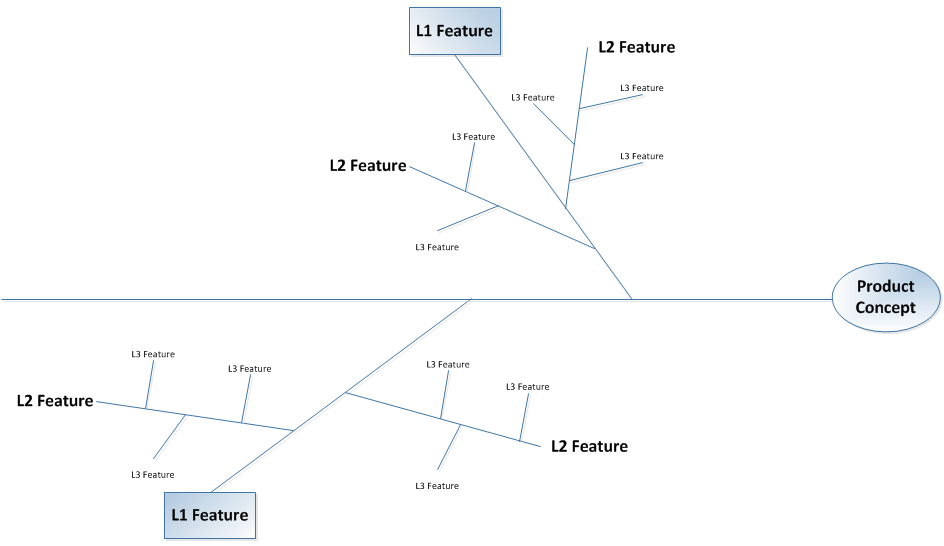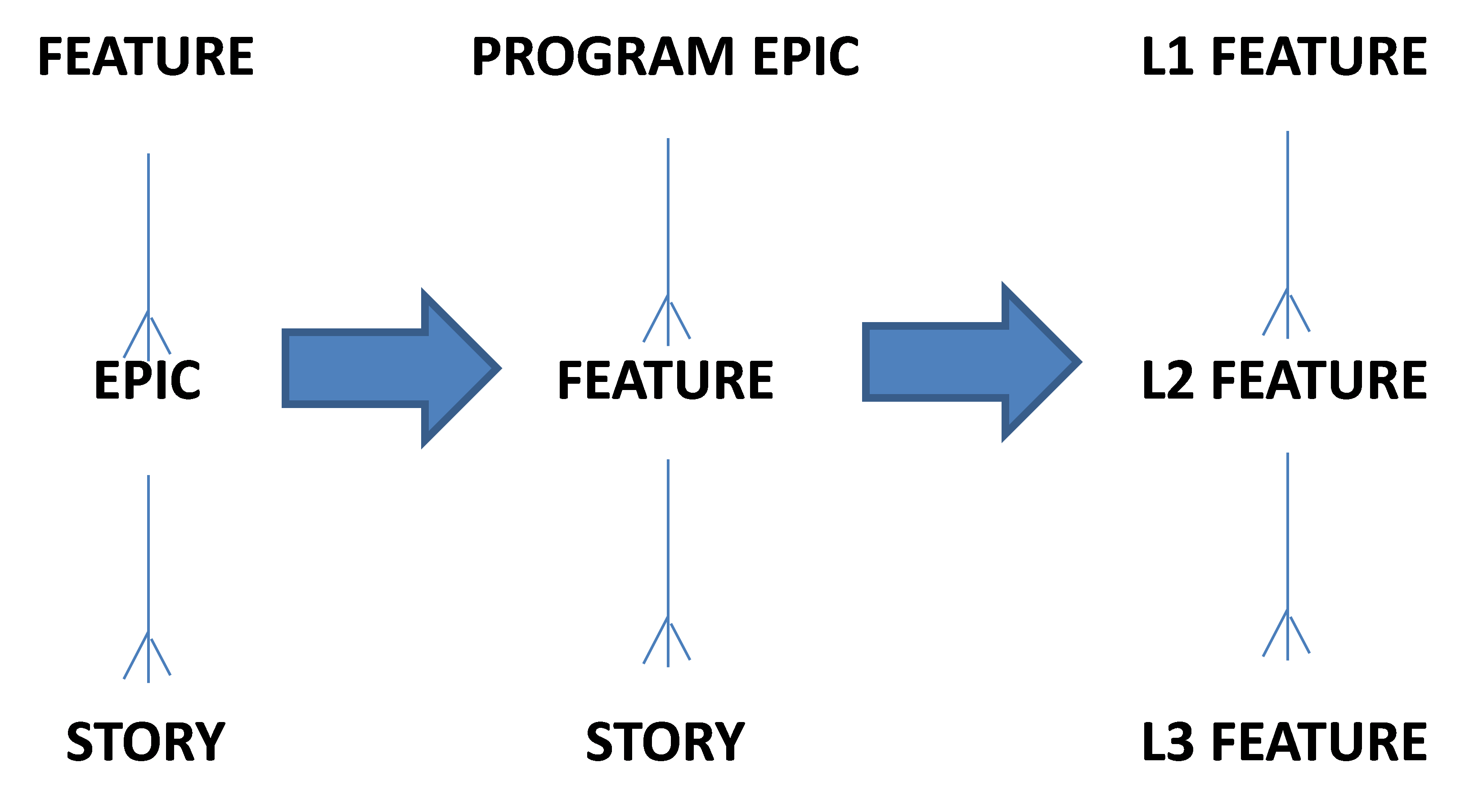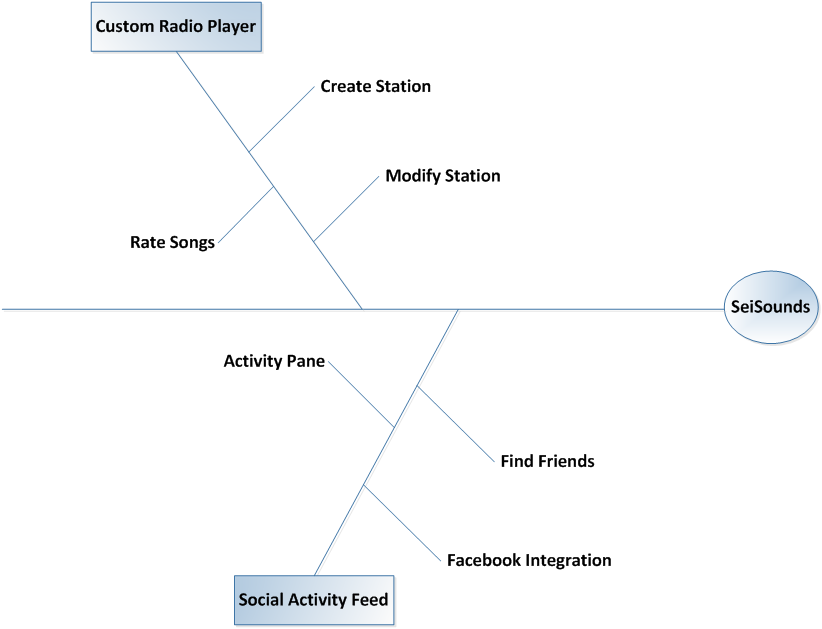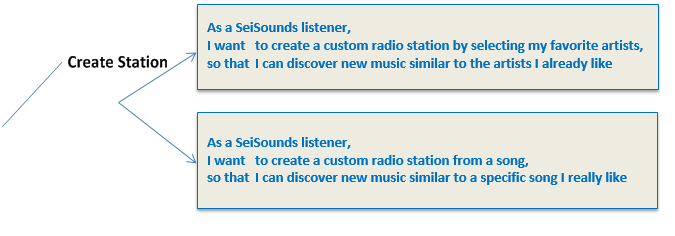This short paper series, “Deep Dive Models in Agile”, provides valuable information for the Product Owner community to use additional good practices in their projects. In each paper in this series, we take one of the most commonly used visual models in agile and explain how to create one and how to use one to help build, groom, or elaborate your agile backlog.
A Feature Tree is an RML Objectives model that shows the full scope of features for a project or product on a single page in a tree format. A feature is just a short form description of functionality provided by the project or product that brings value to the end user. The Feature Tree is great for bringing new people on a project up to speed and showing executives, business stakeholders, or customers all the features that are in scope for a project or release.
The Feature Tree is similar in shape to a fishbone diagram or an Ishikawa diagram, but shows levels of features instead of root-cause analysis. It is easier to read than a flat list of features for a product because the Feature Tree groups them into logical buckets, but Feature Trees are very similar in function to Story Maps or Affinity Diagram which are also other ways to organize features visually for consumption. See an example Feature Tree below.

When would I use a Feature Tree on an agile project?
Feature Trees are useful for almost any agile project, because they are just a good way to organize information about the project. The Product Owner (PO) or Business Analyst (BA) will usually elicit the start of a Feature Tree during a sprint 0 or planning type phase, possibly with information from a project charter or light-weight business case. From there, the PO or BA will organize the features into groupings, understand the connections between L1, L2 and L3 features and identify if there are any missing features. Depending on the story hierarchy you are using on your project, you might use Program Epic -> Feature -> Story or just Feature -> Epic -> Story for your L1, L2 and L3 features with the story level being optional (see illustration below).

Since you won’t always know the full scope of the product during sprint 0 or planning, the Feature Tree is always evolving, even throughout development as the PO or BA finds new features to add to the backlog.
The Feature Tree also helps organize the hierarchy of your backlog as you know have an easy visual of how things are related.
Some ways Feature Trees are modeled to be especially useful on agile projects:
- Color coding: the PO or BA can color code the features by release or sprint/iteration, which makes it easy to see at a glance if certain features are in or out of scope for a release
- Prioritization by location: the PO or BA can order the Feature Tree such that more important items are closer to the “trunk” of the tree, allowing for visualization of the backlog prioritization
- Gap Analysis or Current/Future State: instead of color coding by release, the PO or BA can color code for gaps or current vs. future state of the system (with red, blue, green or little colored circles we like to call skittles)
How do I create a Feature Tree?
Like Process Flows, Feature Trees are one of the easier RML models to elicit and create. First, the PO or BA should find out if there are any existing lists of features for the project or product from a vision and scope document or a project charter.
From there, the PO or BA would host a brainstorming session to identify potential features and maybe even group them in an affinity diagram or story map. After that, the PO or BA would need to decide the format for their features. This paper is about the Feature Tree as a convenient way to organize the information but a two level story map or affinity diagram will convey a lot of the same information (just perhaps not tie back to the backlog as well depending on the structure).
The model itself once the PO or BA has decided upon that format is pretty straight forward with only 2 elements:
Trunk/Product Concept- On the trunk of the Feature Tree is the Product Concept; this is a short form phrase that says what the product or project is. This will come from the Business Objectives Model which will be discussed in the next edition of Deep Dive.
Branches/ Feature- Coming out from the trunk are branches which have levels just like real tree branches. The largest branch type is the L1 features. Like the product concept, the L1 features will be described at a high level from the Business Objectives Model. These L1 features will be further broken down into L2 and L3 features (smaller branches) depending on your story hierarchy.
How do I derive user stories out of a Feature Tree?
Once the PO or BA has a good starting draft of the Feature Tree, the epics or features (again depending on your hierarchy) almost fall out of the Feature Tree. Each L2 or L3 branch becomes a feature, epic or story and each L1 branch becomes a Program Epic or Feature (based on SAFe or generic agile hierarchies). See example Feature Tree below:

So a feature for “Create Station” below might become the following epics/ features in your backlog:

Additionally, as mentioned above, you can add color coding to denote releases or sprints like below:

Conclusion
Feature Trees, like Process Flows, are super easy RML models to use on agile projects and derive features, epics and user stories from because they organize the scope of a project or product onto a single page.
Executives, business stakeholders, and customer love this visual model because it shows them what is in and out of scope easily and potentially even shows them when they will get certain features. Developers and testers like the Feature Tree because it gives them the big picture of the entire project while they are working on specific user stories. Finally, the POs and BAs find this model useful for backlog population early in the project and maintenance throughout, so it is one of the most commonly used RML models on agile projects (second only to Process Flows!)
One note of caution is that because it is so easy to add additional features and scope to the Feature Tree and thus to the backlog, the PO or BA has to be vigilant in the management of the backlog to ensure that only the most valuable features get built for his/her project.